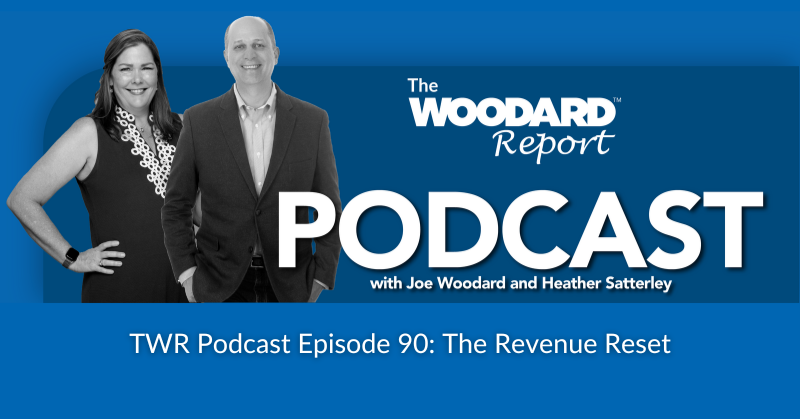In the latest episode of the Woodard Report podcast, hosts Joe Woodard and Heather Satterley tackle a topic crucial for accounting professionals: the revenue reset. This is a practice in which accounting and bookkeeping firms correct prices for existing clients to ensure firms are not leaving money on the table.
Sponsored by RightWorks, this episode delves into practical strategies for adjusting client pricing, managing workloads, and improving profitability. Here are some highlights from the discussion.
The importance of the revenue reset
Joe Woodard opens the discussion by emphasizing the widespread challenge among accounting firms: correcting prices for existing clients.
He explains that many firms are not charging their clients appropriately, resulting in lost revenue. Satterley agreed, stating that this topic is vital for any practice that has been operating for at least a year. Joe introduces the concept of the "revenue reset," a structured approach to reassessing and correcting client pricing.
The revenue reset: A seven-step process
Joe outlines a seven-step process for accounting firms implementing a revenue reset:
- 1. Assess your client base: Use the Pareto principle (80/20 rule) to identify the top 20% of clients contributing to 80% of your profits. Conversely, identify the bottom 20% who may be draining resources.
2. Identify non-ideal clients: Focus on clients generating the least profit. These clients often require a pricing correction to ensure they are contributing fairly to your firm's revenue.
3. Correct pricing: Increase prices for non-ideal clients. Be prepared for potential churn, but understand that losing these clients can open up capacity for more profitable opportunities.
4. Utilize adaptive capacity: Use the newly available capacity to market new services, invest in employee development, or simply allow your team to work more manageable hours.
5. Monitor new clients: Establish an ideal client profile to ensure future clients fit your firm's strategic goals and are willing to pay appropriate rates.
6. Carefully expand client base: Expand your client base selectively, ensuring that new clients align with your ideal client profile and pricing structure.
7. Maximize retention: Focus on retaining high-value clients by continually demonstrating the value of your services.
Satterley added that implementing these steps requires a change of mindset, highlighting the importance of recognizing your value. “Shift your mindset from, ‘what can the world give to me?’…You've got to take shift that mindset to, ‘what can I give to the world?’…When you shift your mindset from ‘the world owes me something’ to ‘I owe something to the world,’ all of a sudden, you're a powerful being, and you're focusing on your talent.”
Woodard and Satterley discussed the necessity of being brave and systematic in this process, emphasizing the benefits of increased gross profit margins and enhanced capacity for strategic growth.
Embracing change
By reassessing client pricing and making strategic adjustments, firms can improve profitability, enhance team well-being, and position themselves for long-term success.
Woodard closed the episode by reminding listeners that sometimes the practice ownership journey requires courage and a willingness to change, but the rewards are well worth the effort. “Don't worry about change,” he said. “Don't define yourself by loss or the past. Define yourself by what you survive and what you forge in the future.”
This was just a taste of the insight shared by Woodard and Satterley in Episode 90 of “The Woodard Report Podcast”—click the links below to listen to the full episode!
Follow The Woodard Report Podcast on your favorite podcast platform.
Sponsored Content: This article is generously brought to you by one of our valued sponsors. Their support enables us to continue delivering expert insights and the latest industry trends to our dedicated community of accounting professionals.
.png?width=150&height=63&name=TWRlogo-regmark_blueblack%20(1).png)
.png)










Do you have questions about this article? Email us and let us know > info@woodard.com
Comments: